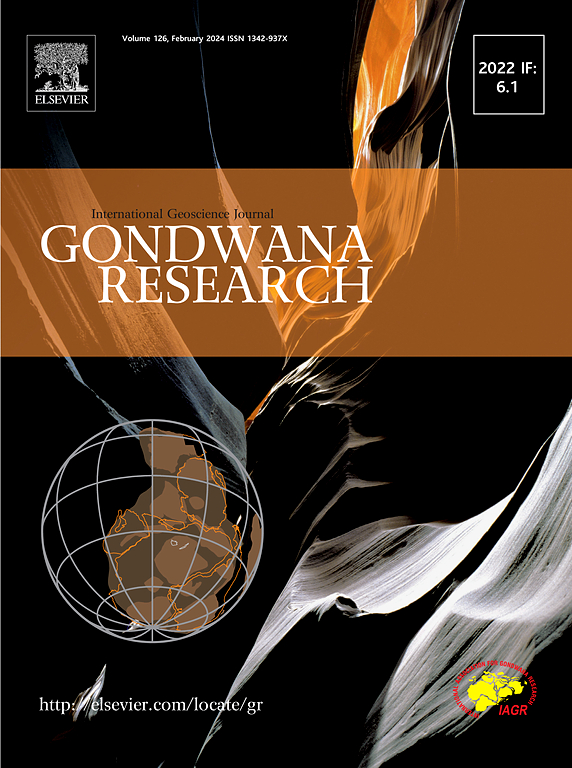Variations in Central Asian dust activity and potential driving mechanisms over the past 80 kyr
IF 7.2
1区 地球科学
Q1 GEOSCIENCES, MULTIDISCIPLINARY
引用次数: 0
Abstract
Loess plays a vital role in unraveling the dynamics of dust activity and its implications for climate change. In recent years, the study of dust activity in Central Asian loess has gradually enriched. However, there is a notable gap in comprehensive studies addressing on the long-term changes in dust accumulation rates (DAR) and mean grain size (MGS) in Central Asian loess, and the primary factors influencing aeolian loess deposition remain a subject of debate. In this study, we address this gap by synthesizing DARs data from 42 loess profiles in Central Asia with radiometric dating including OSL and radiocarbon, normalizing and overlapping the DAR and MGS data using the Z-score method. The results show that the DAR of the loess in Central Asian subregions I and II increased from MIS5 to MIS3, reached the highest in MIS3, decreased from MIS3 to mid-Holocene, and increased after mid-Holocene. The variation of DAR in subregion III has been more consistent with the other two subregions since Holocene. The DAR and MGS trends in Central Asian loess are in sync, effectively indicating the Central Asian dust activity since 80 thousand years (kyr) ago. The dust activity in Central Asia is mainly dominated by intense of westerlies which is controlled by precession and obliquity leading to changes in water vapor and wind power. Siberian High and local glacier activities also affect Central Asian dust activity. This study reveals dust activity and driving mechanisms in Central Asia over the past 80 kyr.

过去80年来中亚沙尘活动的变化及其潜在驱动机制
黄土在揭示沙尘活动的动态及其对气候变化的影响方面起着至关重要的作用。近年来,对中亚黄土粉尘活动的研究逐渐丰富起来。然而,对中亚黄土的累积尘率(DAR)和平均粒径(MGS)长期变化的综合研究还存在明显的空白,影响风沙黄土沉积的主要因素仍是一个有争议的问题。在这项研究中,我们通过使用包括OSL和放射性碳在内的放射性测年方法综合了中亚42个黄土剖面的DAR数据,并使用Z-score方法对DAR和MGS数据进行了归一化和重叠,从而解决了这一差距。结果表明:中亚I、II亚区黄土的DAR从MIS5到MIS3逐渐增大,在MIS3达到最高值,从MIS3到中全新世逐渐减小,中全新世以后逐渐增大。全新世以来,第三分区的DAR变化与其他两个分区更为一致。中亚黄土的DAR和MGS趋势是同步的,有效地反映了8万年以来中亚的沙尘活动。中亚地区的沙尘活动主要受西风带的强烈影响,西风带受进动和倾角的控制,导致水汽和风力的变化。西伯利亚高压和当地冰川活动也影响中亚的沙尘活动。本研究揭示了中亚地区近80年来的沙尘活动及其驱动机制。
本文章由计算机程序翻译,如有差异,请以英文原文为准。
求助全文
约1分钟内获得全文
求助全文
来源期刊

Gondwana Research
地学-地球科学综合
CiteScore
12.90
自引率
6.60%
发文量
298
审稿时长
65 days
期刊介绍:
Gondwana Research (GR) is an International Journal aimed to promote high quality research publications on all topics related to solid Earth, particularly with reference to the origin and evolution of continents, continental assemblies and their resources. GR is an "all earth science" journal with no restrictions on geological time, terrane or theme and covers a wide spectrum of topics in geosciences such as geology, geomorphology, palaeontology, structure, petrology, geochemistry, stable isotopes, geochronology, economic geology, exploration geology, engineering geology, geophysics, and environmental geology among other themes, and provides an appropriate forum to integrate studies from different disciplines and different terrains. In addition to regular articles and thematic issues, the journal invites high profile state-of-the-art reviews on thrust area topics for its column, ''GR FOCUS''. Focus articles include short biographies and photographs of the authors. Short articles (within ten printed pages) for rapid publication reporting important discoveries or innovative models of global interest will be considered under the category ''GR LETTERS''.
 求助内容:
求助内容: 应助结果提醒方式:
应助结果提醒方式:


